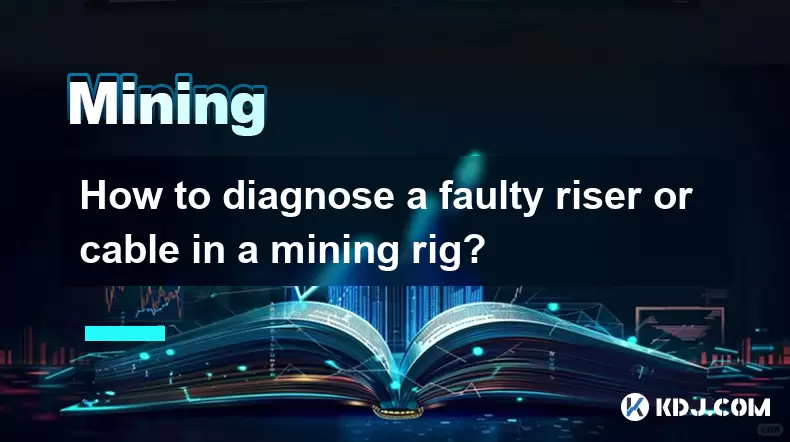-
 Bitcoin
Bitcoin $115100
1.27% -
 Ethereum
Ethereum $3675
2.71% -
 XRP
XRP $2.995
1.45% -
 Tether USDt
Tether USDt $1.000
0.02% -
 BNB
BNB $769.8
2.64% -
 Solana
Solana $168.0
3.25% -
 USDC
USDC $0.9999
-0.01% -
 TRON
TRON $0.3371
1.48% -
 Dogecoin
Dogecoin $0.2051
3.36% -
 Cardano
Cardano $0.7394
2.30% -
 Hyperliquid
Hyperliquid $38.15
0.42% -
 Stellar
Stellar $0.3966
-0.36% -
 Sui
Sui $3.486
2.93% -
 Chainlink
Chainlink $16.72
2.52% -
 Bitcoin Cash
Bitcoin Cash $568.0
4.36% -
 Hedera
Hedera $0.2440
2.59% -
 Ethena USDe
Ethena USDe $1.001
0.04% -
 Avalanche
Avalanche $22.16
2.06% -
 Litecoin
Litecoin $119.1
-0.73% -
 UNUS SED LEO
UNUS SED LEO $8.991
0.04% -
 Toncoin
Toncoin $3.232
-0.39% -
 Shiba Inu
Shiba Inu $0.00001233
2.82% -
 Uniswap
Uniswap $9.717
2.53% -
 Polkadot
Polkadot $3.664
1.85% -
 Dai
Dai $1.000
0.01% -
 Monero
Monero $281.2
-3.89% -
 Bitget Token
Bitget Token $4.350
1.55% -
 Cronos
Cronos $0.1428
5.07% -
 Pepe
Pepe $0.00001050
3.68% -
 Aave
Aave $262.3
3.54%
Why does mining require a lot of parallel computing power?
Cryptocurrency mining's computational race necessitates massive parallel processing power to solve complex problems quickly, increasing the odds of earning block rewards and securing the network.
Mar 22, 2025 at 04:07 am

Why does mining require a lot of parallel computing power?
Cryptocurrency mining, at its core, is a computational race. Miners compete to solve complex mathematical problems, and the first to find the solution gets to add the next block of transactions to the blockchain and receives a reward in cryptocurrency. The difficulty of these problems is dynamically adjusted to maintain a consistent block creation rate, ensuring the network's security and stability. This inherent competition necessitates significant computing power.
The mathematical problems involved are designed to be computationally intensive. They aren't designed to be solved easily or quickly. These problems, often based on cryptographic hash functions, require vast amounts of trial and error. Each attempt to solve the problem involves running the hash function on a different input, hoping to find one that meets the specified criteria. This iterative process demands considerable processing power.
Parallel computing becomes crucial because it allows miners to perform many calculations simultaneously. Instead of trying one solution at a time, a miner with parallel processing capabilities can try thousands, millions, or even billions of solutions concurrently. This significantly increases the chances of finding the solution first, thereby increasing the likelihood of earning the block reward. The more parallel processing units a miner possesses, the faster they can perform this trial-and-error process.
The type of parallel computing used in mining is typically based on Graphics Processing Units (GPUs) or Application-Specific Integrated Circuits (ASICs). GPUs, originally designed for rendering graphics, are highly efficient at parallel processing, making them suitable for mining. ASICs, on the other hand, are specifically designed for cryptocurrency mining, offering even greater efficiency and hashing power than GPUs. This specialized hardware is essential for competitive mining.
The continuous increase in mining difficulty further necessitates greater parallel computing power. As more miners join the network, the difficulty adjusts upwards, requiring even more computational power to solve the problems in a timely manner. This arms race drives miners to constantly upgrade their hardware, leading to an ever-increasing demand for parallel processing capabilities. This is a fundamental aspect of the Proof-of-Work consensus mechanism.
The energy consumption associated with mining is directly linked to the amount of parallel computing power used. The more parallel processing units a miner employs, the more energy is consumed in the process of performing the calculations. This high energy consumption is a significant point of criticism of Proof-of-Work cryptocurrencies, and is a key driver of research into alternative consensus mechanisms like Proof-of-Stake.
Furthermore, the design of the algorithms themselves is crucial. The algorithms used in Proof-of-Work systems are explicitly designed to be computationally intensive and resist parallelization optimization. This means even the most advanced parallel computing techniques still require substantial resources to solve the problems efficiently. Any breakthroughs in algorithm optimization are quickly countered by difficulty adjustments.
The inherent randomness involved in the mining process also contributes to the need for parallel computing. Finding the solution is essentially a probabilistic event. Even with vast computing power, there's no guarantee of finding the solution quickly. Parallel processing increases the probability of success by significantly increasing the number of attempts made simultaneously. It's a numbers game.
Network security is intrinsically linked to the level of parallel computing power deployed. The more computing power dedicated to mining, the more secure the network becomes. This is because it becomes exponentially more difficult for malicious actors to manipulate the blockchain through attacks like 51% attacks. Therefore, the high computational requirements serve a crucial security function.
The scalability of the network also depends on the available parallel computing power. As the network grows and transaction volume increases, the ability to process transactions efficiently depends on the collective computing power of the miners. This makes the availability of powerful parallel processing resources a crucial aspect of network performance. Increased computing power leads to faster transaction processing times.
The financial incentives are a significant driver of the demand for parallel computing power in mining. The reward for successfully mining a block is a substantial incentive for miners to invest in powerful hardware. This creates a competitive market where miners are constantly seeking to gain an edge through more efficient and powerful parallel processing systems. This creates a constant cycle of upgrades and competition.
The technological advancements in hardware also play a role. The development of more powerful GPUs and ASICs continually pushes the boundaries of parallel computing in mining. This continuous improvement in hardware capabilities allows miners to tackle increasingly difficult problems and maintain the network's security. The arms race is a constant push for better hardware.
Frequently Asked Questions:
Q: What is parallel computing?
A: Parallel computing involves breaking down a complex problem into smaller sub-problems that can be solved simultaneously by multiple processors. This significantly speeds up the overall computation time compared to solving the problem sequentially on a single processor.
Q: Why are GPUs and ASICs used in mining?
A: GPUs and ASICs are designed for parallel processing, making them highly efficient at performing the numerous calculations required for cryptocurrency mining. ASICs are specifically optimized for mining algorithms, offering superior performance compared to GPUs.
Q: How does mining difficulty affect the need for parallel computing power?
A: As more miners join the network, the mining difficulty increases, requiring more computational power to solve the cryptographic problems within a reasonable timeframe. This necessitates the use of more powerful and numerous parallel processing units.
Q: What is the relationship between energy consumption and parallel computing in mining?
A: The more parallel computing power used, the higher the energy consumption. This is because more processors require more power to operate simultaneously. This is a major environmental concern associated with Proof-of-Work cryptocurrencies.
Q: How does parallel computing contribute to the security of a cryptocurrency network?
A: The vast amount of parallel computing power dedicated to mining makes it incredibly difficult for malicious actors to control a majority of the network's hash rate (a 51% attack), thereby ensuring the integrity and security of the blockchain.
Disclaimer:info@kdj.com
The information provided is not trading advice. kdj.com does not assume any responsibility for any investments made based on the information provided in this article. Cryptocurrencies are highly volatile and it is highly recommended that you invest with caution after thorough research!
If you believe that the content used on this website infringes your copyright, please contact us immediately (info@kdj.com) and we will delete it promptly.
- BlockDAG, Litecoin, and Cardano: Charting the Course in Crypto's Dynamic Waters
- 2025-08-07 09:09:06
- Fireverse Token: Igniting a Musical Revolution in Web3
- 2025-08-07 08:27:45
- Ethereum, L2 Withdrawals, and Decentralization: A New Yorker's Take
- 2025-08-07 08:32:33
- Avalanche vs. Ruvi AI: Daily Sales Tell a Story of Crypto Disruption
- 2025-08-07 06:29:35
- DeSoc: The Crypto to Buy Now for a Decentralized Future (and Maybe 43x Gains!)
- 2025-08-07 06:50:16
- Arctic Pablo Coin: Riding the Meme Coin Wave with a Deflationary Twist
- 2025-08-07 07:18:13
Related knowledge

What are the differences between mining on Windows vs. Linux?
Aug 06,2025 at 11:29pm
Overview of Cryptocurrency Mining PlatformsCryptocurrency mining involves using computational power to solve complex cryptographic puzzles and validat...

Can you mine cryptocurrency using solar power?
Aug 07,2025 at 12:00am
Understanding the Basics of Cryptocurrency MiningCryptocurrency mining involves validating transactions on a blockchain network by solving complex cry...

How to build a mining rig inside a PC case?
Aug 06,2025 at 11:01pm
Understanding the Basics of a Mining Rig in a PC CaseBuilding a mining rig inside a PC case involves transforming a standard computer chassis into a d...

How to diagnose a faulty riser or cable in a mining rig?
Aug 07,2025 at 01:49am
Understanding the Role of Riser Cables in Mining RigsIn a cryptocurrency mining rig, riser cables serve as the bridge between the motherboard and the ...

How to set up a mining farm with multiple rigs?
Aug 07,2025 at 12:38am
Understanding the Basics of a Multi-Rig Mining FarmSetting up a mining farm with multiple rigs begins with understanding the core components involved ...

How to use a server PSU for a crypto mining rig?
Aug 06,2025 at 08:39pm
Understanding Server PSUs and Their Relevance to Crypto MiningCrypto mining rigs demand stable, high-wattage power supplies to run multiple GPUs effic...

What are the differences between mining on Windows vs. Linux?
Aug 06,2025 at 11:29pm
Overview of Cryptocurrency Mining PlatformsCryptocurrency mining involves using computational power to solve complex cryptographic puzzles and validat...

Can you mine cryptocurrency using solar power?
Aug 07,2025 at 12:00am
Understanding the Basics of Cryptocurrency MiningCryptocurrency mining involves validating transactions on a blockchain network by solving complex cry...

How to build a mining rig inside a PC case?
Aug 06,2025 at 11:01pm
Understanding the Basics of a Mining Rig in a PC CaseBuilding a mining rig inside a PC case involves transforming a standard computer chassis into a d...

How to diagnose a faulty riser or cable in a mining rig?
Aug 07,2025 at 01:49am
Understanding the Role of Riser Cables in Mining RigsIn a cryptocurrency mining rig, riser cables serve as the bridge between the motherboard and the ...

How to set up a mining farm with multiple rigs?
Aug 07,2025 at 12:38am
Understanding the Basics of a Multi-Rig Mining FarmSetting up a mining farm with multiple rigs begins with understanding the core components involved ...

How to use a server PSU for a crypto mining rig?
Aug 06,2025 at 08:39pm
Understanding Server PSUs and Their Relevance to Crypto MiningCrypto mining rigs demand stable, high-wattage power supplies to run multiple GPUs effic...
See all articles

























































































